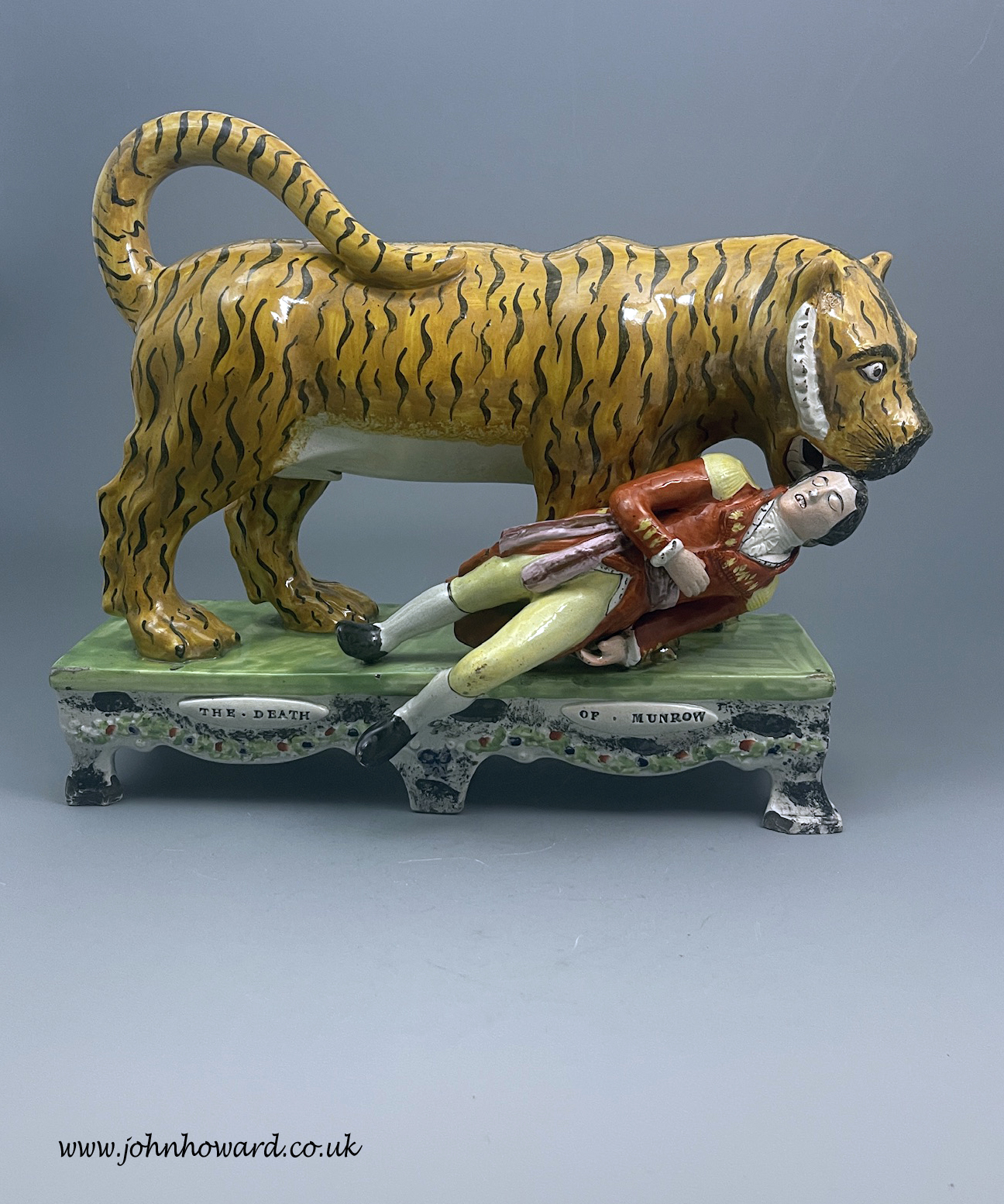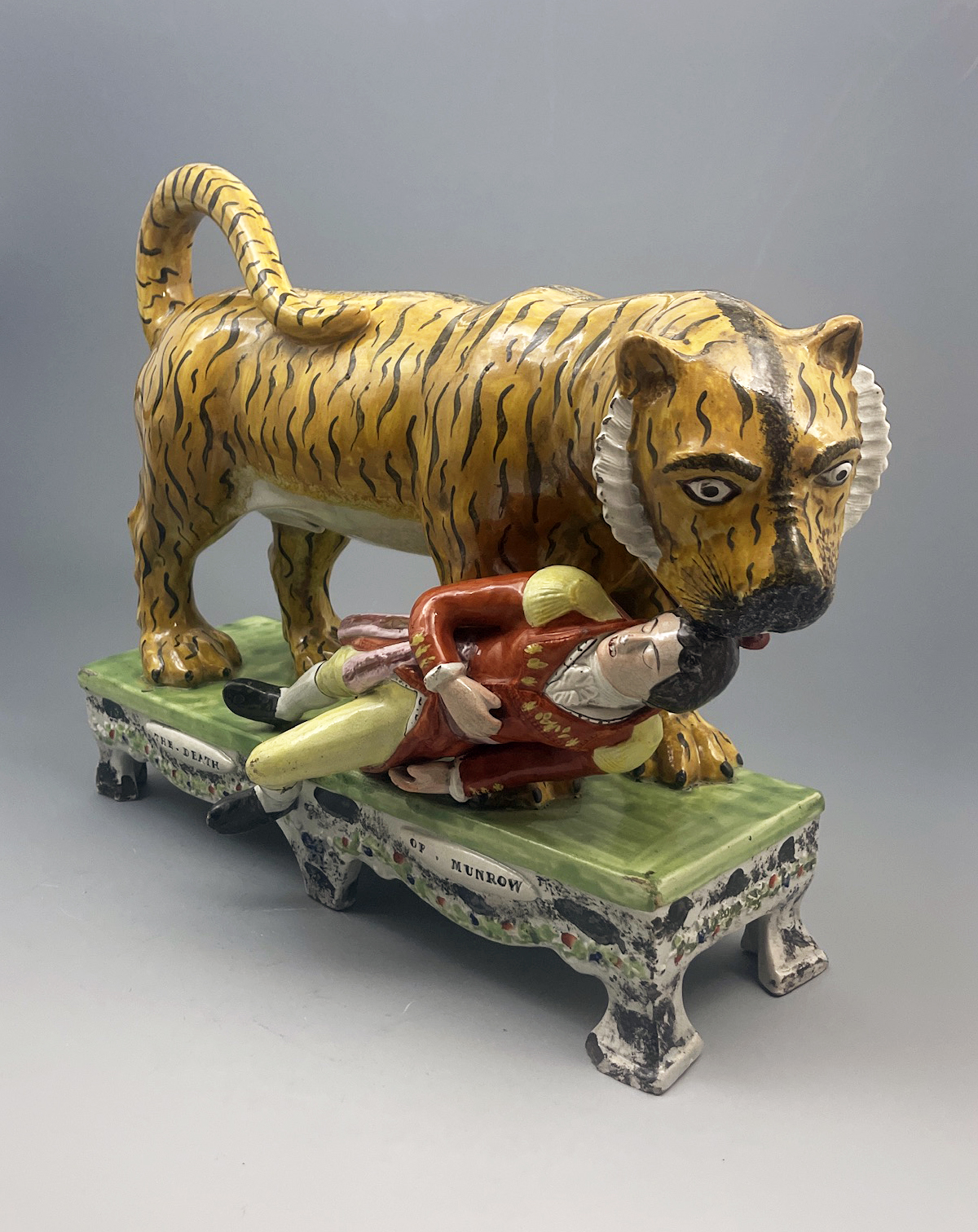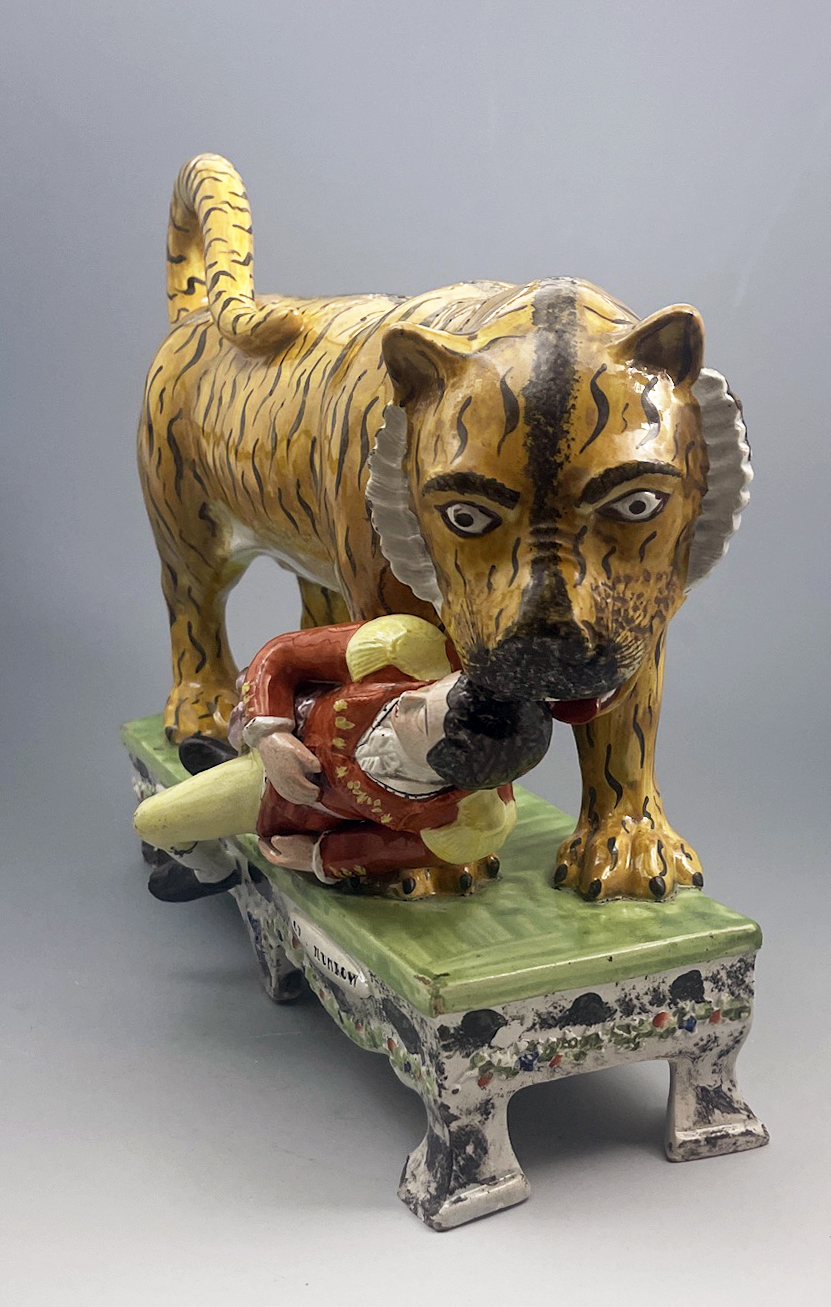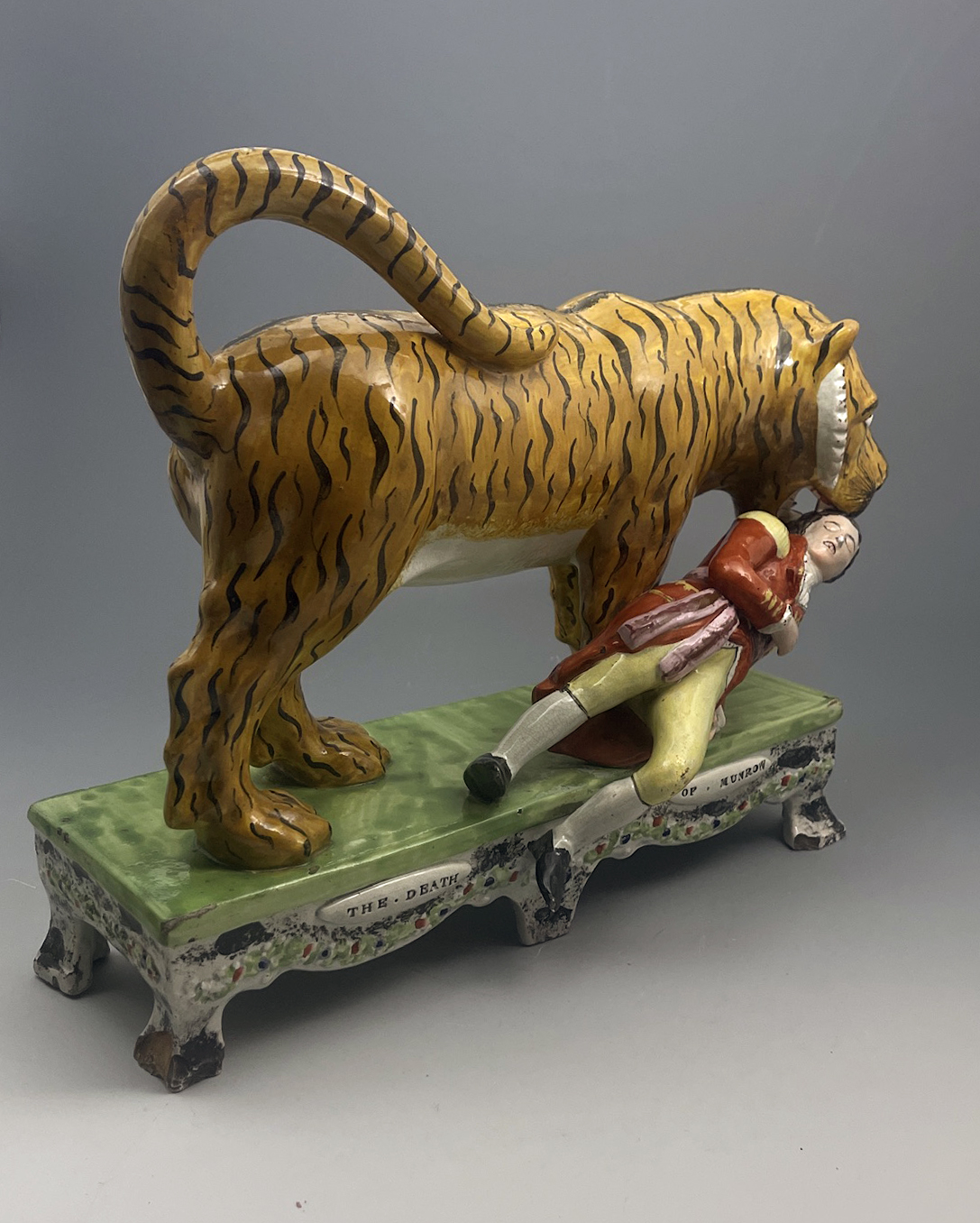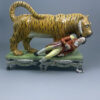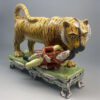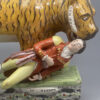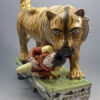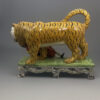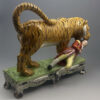Description
An exceptional Staffordshire pottery pearlware glazed table base figure group titled “The Death of Munrow” is attributed to Obadiah Sherratt circa 1825.
The imposing and magnificent tiger holds the head of helpless English officer Munrow in his jaws, who is dressed in full military uniform.
The figure is one of the rarest examples made at the Staffordshire potteries in the early 19th century and is in excellent condition with no restorations.
It is recorded that Hector Munro joined the East India Company’s military service in 1792 as a cadet. Sadly, on his way to Madras, he was mauled by a tiger while on a hunting expedition in Bengal in December 1792.
He was rescued by his compatriots but died the following day. The incident was recorded in The Gentleman’s Magazine and described as an ” awful, horrid and lamentable accident.”


